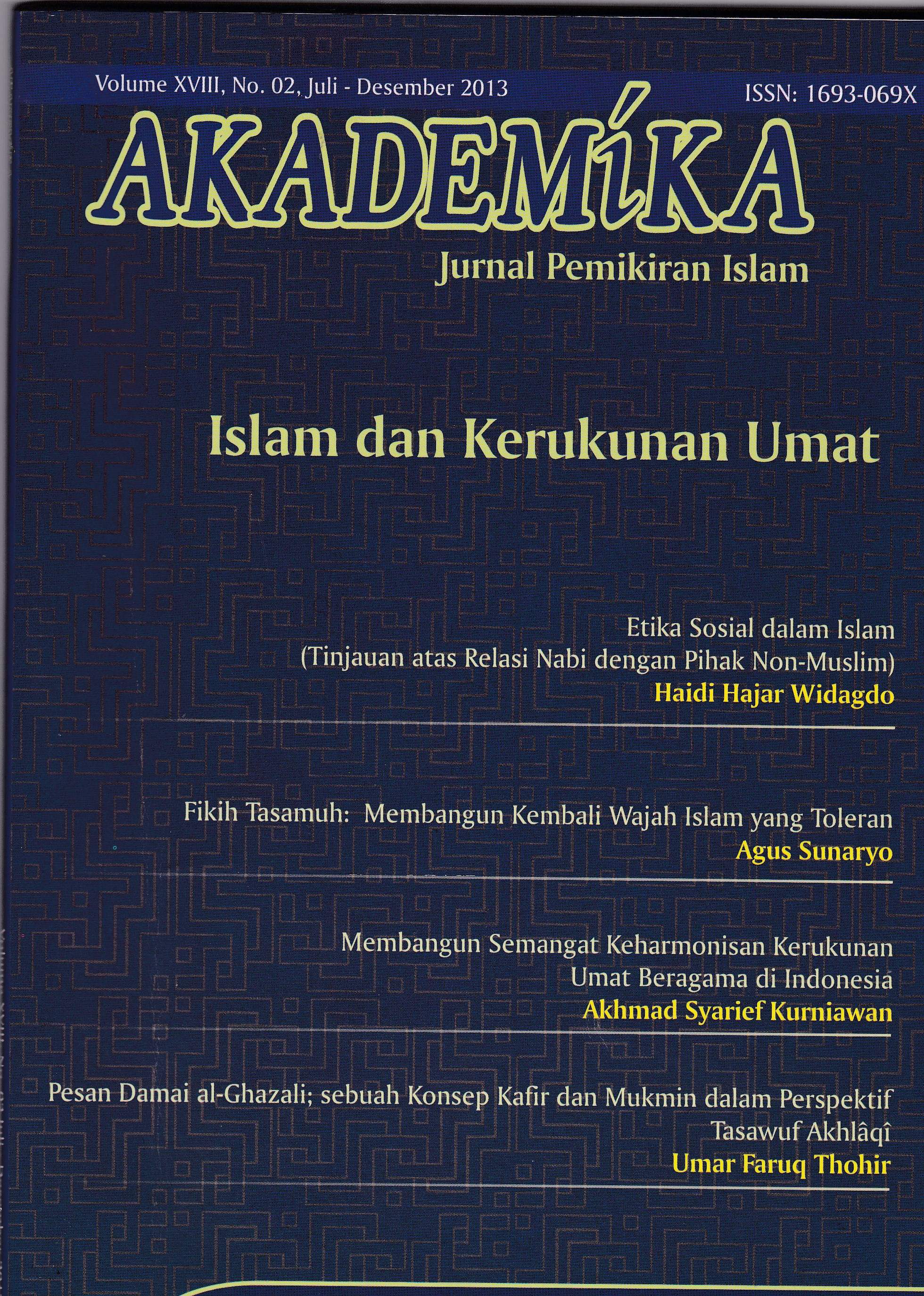FIKIH TASAMUH: MEMBANGUN KEMBALI WAJAH ISLAM YANG TOLERAN
Keywords:
Inklusif, toleran, tasamuh, fikih, intoleranAbstract
Pola keberagamaan yang terbuka dan toleran pada dasarnya merupakan salah satu karakter dari ajaran Islam yang bersifat universal. Keterbukaan dan toleransi ini merupakan ajaran yang tidak hanya berlaku pada masa tertentu atau suatu tempat saja, melainkan melampaui keduanya. Namun demikian, fakta sejarah telah menyadarkan kita bahwa pernah terjadi proses pemasungan (penyempitan) universalitas ajaran Islam, sehingga karakter ajaran yang semula inklusif-toleran berubah menjadi apriori-diskriminatif. Bahkan di tangan beberapa orang ajaran tersebut telah diramu menjadi doktrin agama yang eksklusif– intoleran. Artikel ini akan mengurai persoalan tersebut dan menawarkan upaya pembacaan ulang terhadap doktrin agama yang tidak relevan dengan semangat Islam rahmatan lil al-alamin.The opened and tolerant pattern of religiousity is basically one of the characteritics of universal Islamic teachings. The openness and tolerance are tenets that are not only prevalent to a certain time and place, but also they are passing beyond both. However, the historical fact has brought us that there has been a constriction process in the universality of Islamic teaching. So that, the characteristic of Islamic teaching has changed from inclusive-tolerance to a priory-discriminative. Moreover, to certain people, this Islamic teaching has been turned into an exclusive-intolerance religious doctrine. This article elaborates the issue and offers a concept rereading the religious doctrine that is not relevance to the spirit of universality of Islam (rahmatan li al-'alamin).
Downloads
Download data is not yet available.
Downloads
Published
22-10-2013
Issue
Section
Articles
License
All articles in the Akademika can be disseminated on condition that they still include the identity of the article and the source (Akademika). The publisher is not responsible for the contents of the article. The content of the article is the sole responsibility of the author.
Authors who publish this subject agree to the following terms:
First, the Authors retain copyright and grant the journal right from first publication with the work simultaneously licensed under a Creative Commons Attribution-ShareAlike 4.0 International License that allows others to share the work with an acknowledgment of the work's authorship and initial publication in this journal.
Secondly, the authors can enter into a separate or an acknowledgment of its initial (e.g., post-institutional repository or publish it in a book) publication in this journal.
Third, the authors are permitted and encouraged to post their work online (e.g., in institutional repositories or on their website) before publishing work is cited.







